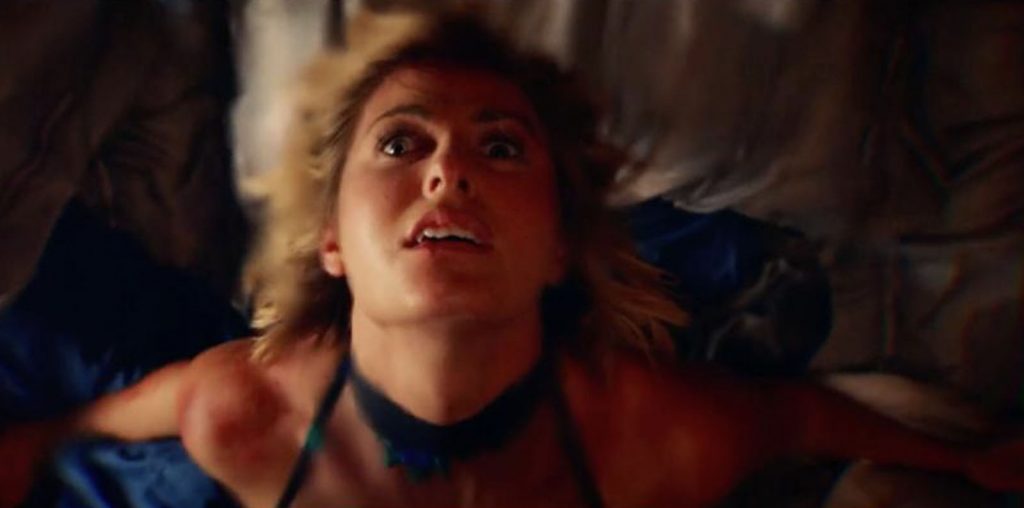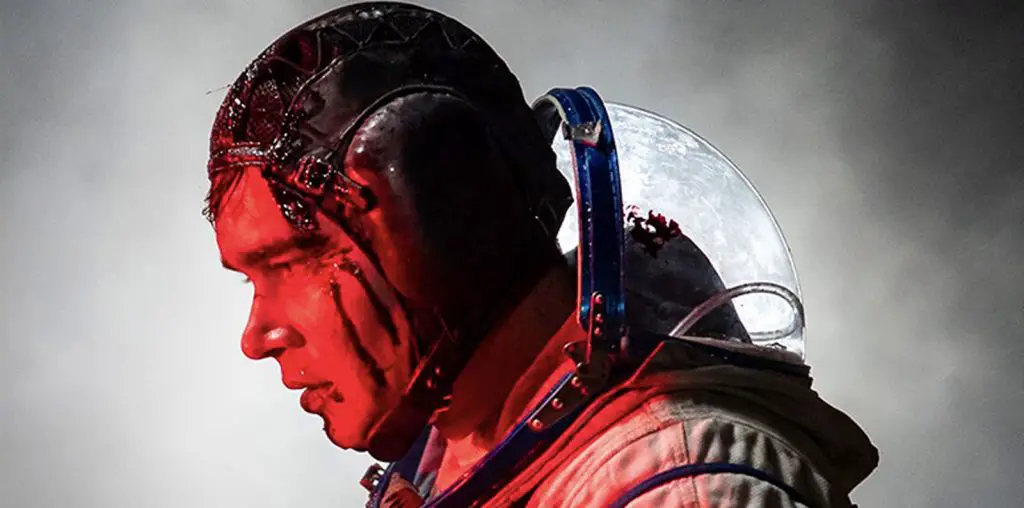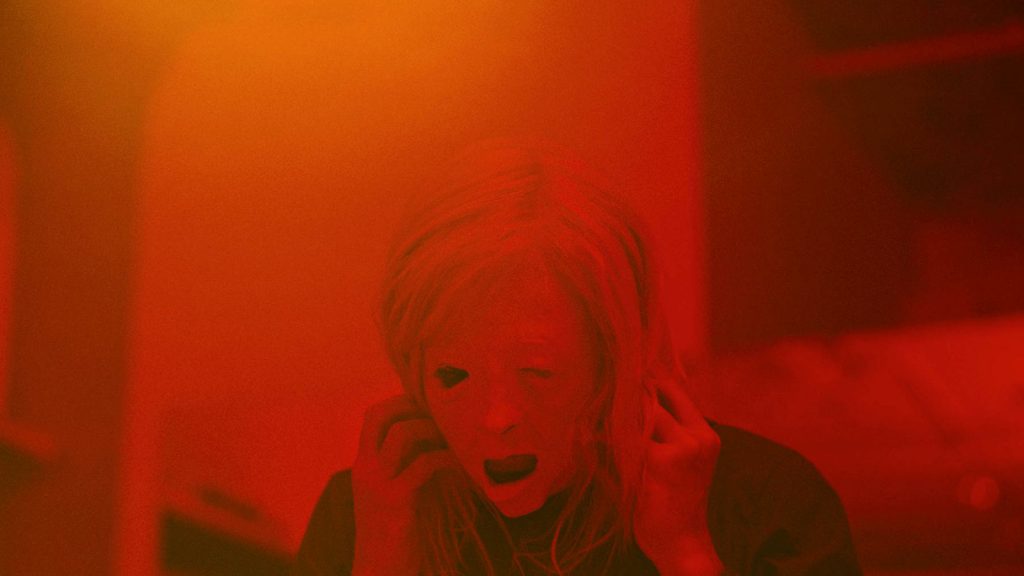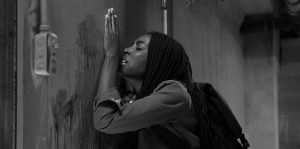
The surrealistic Friend of the World works more like a stage play than a film. Sprinting in at just under an hour, the two-character drama introduces us to Diane Keaton (Alexandra Slade, only sharing the name of the former Woody Allen muse) who awakens in an underground bunker strewn with dead bodies. She escapes only to find herself in the company of General Gore (Nick Young), who does little to ease the comfort of her new surroundings. They proceed from room to room while attempting to understand their situation as well as one another.
Friend of the World is filled with random metaphorical images, like a strange man who “births” from his back, a full-grown man whose sole purpose is to fix a chair, then swallows an M-80, all the while, rolling out situations that provide only fragments of the broader meaning. The two leads speak to one another in baroque phrases with a clipped cadence that are purposely cloudy, but seldom boring.
Mostly shot in stark black and white, and shuffled into five chapters (with such titles as “Synthesis or: How I Learned to Swallow the Elephant”), Friend of the World is bleakly reminiscent of Matthew Holness’ nightmarish Possum, with a bit of Cronenberg body horror tossed into the mix. It’s nowhere near as savagely stark as Holness’s ode to repressed sexual assault and shot with about a tenth of the budget. But it does share a persistent dread and discomfort as our leads drop seemingly non-sequitur slices of dialogue that move the story, though it also misses the opportunity to take on other obvious aspects the film sets up for us to digest. For example, crafting a tale this insular with an older white male and a young, gay black female is rife with tension that is all-but-forgotten.
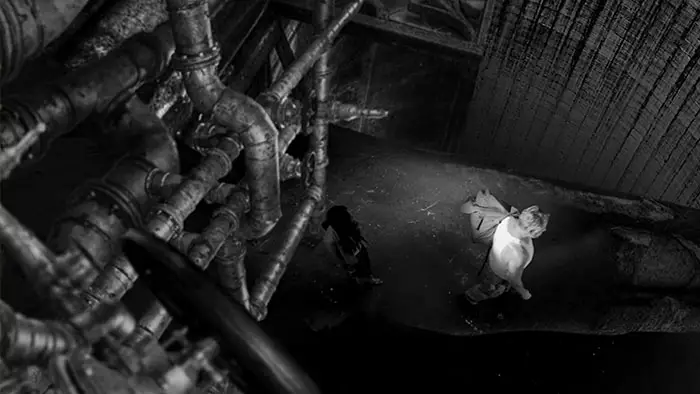
“…Diane… awakens in an underground bunker strewn with dead bodies.”
Even with the missed opportunities, there is something oddly magnetic to Friend of the World, as audiences attempt to unravel its coiled dialogue. Writer-director Brian Patrick Butler doubles down on the confusion by introducing a hallucinogenic toxin cure for his leads to take, further complicating where the walls of reality exist for his leads and audience alike. And his nods to former films and plays suggest he is aware of what he is crafting (General Gore is a name that could easily sit in Dr. Strangelove‘s war room table, and in one scene he’s seen reading Ibsen’s The Doll House).
As the young survivor, Slade demonstrates a quiet ferocity that may be slow to burn, but capable of damage when she ignites. As the grizzled Gore, Young strikes the right posture and overall tone, though his delivery misses the mark on a few occasions. It’s never enough to distract from the story and honestly could add to it if the film is approached more through an absurdist lens.
Friend of the World will certainly not satiate those looking for mainstream horror/sci-fi. While there are a few decent special-effects-heavy scenes, it’s budget was not enough to polish them beyond a Syfy feature. Friend of the World has more on its mind than showing us the end of the world as we know it, and that is fine. It’s crafted for those who appreciate what they do not see as much as what is revealed, and those who are more interested in looking at the apocalypse’s effect on the psyche rather than the zombie hordes that follow.
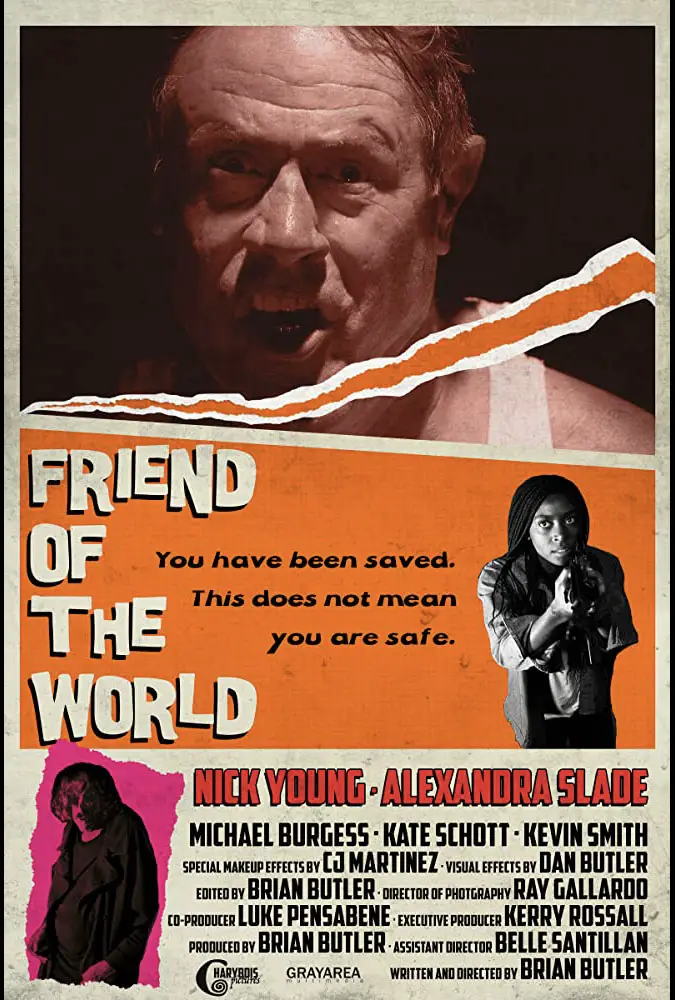
"…crafted for those who appreciate what they do not see..."
